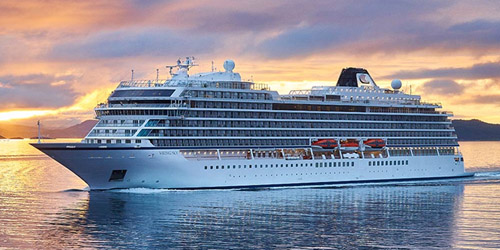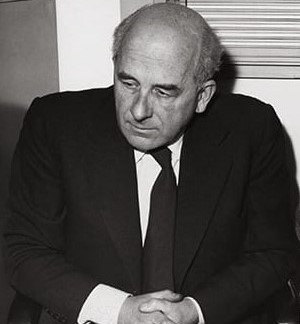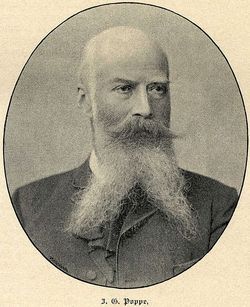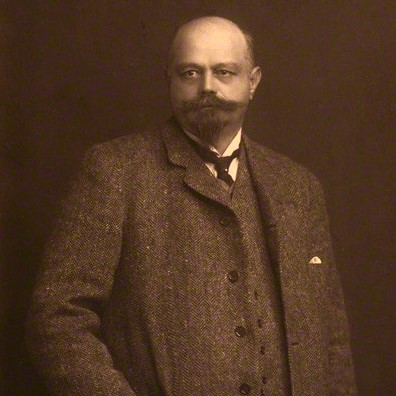
Viking Cruises is rapidly expanding in the luxury segment of the cruise industry, It currently (2019 nvo) has 6 active ships and yet another 12 vessels on order until 2027. Built between 2015 and 2027 with delivery of at least one ship a year, Viking is set to become the world’s leading luxury cruise line. The company is in direct competition with Regent Seven Seas Cruises, Seabourn, Azamara, Silverseas etc. Building the current fleet and those on order is referred to as project Odin ( a god in Norwegian mythology) which is in line with the company’s name and background.

Viking Cruises is led by Torstein Hagen, a well-known face in the deluxe cruise industry as he is a former CEO of Royal Viking Line in the eighties Royal Viking was one of the most important upmarket cruise lines from 1972 until 1998). Today, 20 years after the company ceased operations, it’s name and reputation are still famous in the luxury cruise industry. Viking Cruises was established in St. Petersburg and Mr. Hagen was backed by Swedish Shipowner Christer Salen who also joined him as a board member). Before, after the Royal Viking Line era, he had been involved in a Dutch shipping firm that went out of business and almost left him bankrupt. With help from Russian oligarchs he had helped acquiring a shipping line, he was able to but four river vessels and the new firm started up as Viking River Cruises in 1997, but the name was changed to Viking Cruises in 2013 when the company was split up in two divisions: Viking River Cruises (which now operates over 60(!) river cruisers) and Viking Ocean Cruises. Viking River Cruises takes you to Europe mainly but also as far as Asia, Egypt and China. The Ocean Cruise division has grown dramatically since the first new ship was delivered in 2015.

All delivered and planned ships are built by the Fincantieri shipyard in Italy measure 47,840 GRT and are sister ships, having the same lay-out. This gives Viking an important edge as for example reservations can be processed in one compact reservations application. The same goes for other operational aspects. Viking Orion and Viking Jupiter are the last two vessels delivered in 2018 and 2019. The company is targeting the market of mainly adults of over 50, well-travelled and interested more in the destinations than the ship itself which is of course the opposite of the mainstream companies where the ship is the destination, having all sorts of spectacular facilities like ice-rinks, rock-climbing etc.

On Viking vessels no childrens facilities, photographers or a casino are present, nor cabins suited for other than double occupancy, as none have the option for a 3rd or 4th bed. There are 465 cabins, all with private balconies for 930 passengers which are spacious, the smallest being 270 ft2 , about 15% above industry average. A space ration -which is the enclosed space measured in cubic feet per passenger- of 51.5 makes these vessels very spacious indeed. On 12 decks, 10 for passenger use and 2 for the crew, interior design has a Scandinavian touch, with the use of natural materials, developed by a team of interior architects from SMC-design and Rottet Studios from Los Angeles. Torstein Hagen’s daughter Katrina acts as vice-president and is also the “spokeswoman” of the company as she does most of the company’s marketing video material narration.

The interior of the Viking ships is quiet, subdued, luxury and modernist without the glitz we find onboard mass market’s ships, as mentioned before with a Scandinavian touch, which is also reflected in the art work onboard, like some pieces of Edvard Munch (famous for his work “The Cry”). The focal point is the three deck high atrium where passengers can relax having a drink, do some quiet reading in the library etc. There are seven restaurants, two of these are specialty restauramts and two offer outdoor seating. All are complimentary but the space in the specialty restaurants is allocated based on cabin category to manage demand.

Other than her sister ships, Viking Orion has a planetarium installed, with room for 26 passengers. The only other ship having a planetarium is Cunard’s Queen Mary 2, but Viking Orion’s planetarium is in 3D, so it is extra special, a unique feature, which is free of charge. Many things are complimentary on Viking ships, besides the already mentioned specialty restaurants and the planetarium, the same goes for WIFI, drinks (beer, wine) at mealtime and in every port one excursion is offered for free check. The Viking ships are all sister ships, which means operational effectiveness which competing lines with mixed fleets cannot achieve. The low, squat funnel give the ships an air draft –the distance from the surface of the water to the highest point of a vessel- of 44m making them ease to manoeuvre. A dedicated crew area is wrapped around the funnel on the top deck.
Viking vessels are driven by diesel-electric machinery, split up for safety reasons in two separated engine rooms, also with separate electrical switch boards. In each engine room a 9 and a 12 cylinder engine is installed in a so called father and son configuration enabling to have only the power available which is needed at a given time. Other technical innovations are the use of seawater to lubricate propellor shafts which is both economical and environmental friendly as no oil is needed. Furthermore, the ships’ twin rudders have the Rolls-Royce Promas system installed which implies streamlined propeller hubcaps and rudders improving hydrodynamic performance propellors and thus fuel efficiency with minimum vibration.

May 2018, Viking Cruises announced the Ultimate World Cruise, which is the longest world cruise itinerary in history, it covers 245 days on Viking Sun and visits 59 countries and 113 ports
In its short existence, the company only experienced one serious incident when Viking Sky, on its way from Tromso to Stavanger on March 23 suffered a total engine shutdown leaving the ship powerless in a rough sea with strong winds. Later investigations made clear that because of the violent movement of the ship, the lubrication pumps did not have enough oil pressure, so the engine software shut down the engines to avoid damage to the engines. Sensors measuring oil pressure were reported not to have functioned properly. Followinh the ship’s Mayday-signal, 479 passengers were evacuated by helicopter. A day later, she reached Molde under her own power with three of her four engines restarted.
October 2019, Viking Cruises has announced its new Viking Expedition Cruises, currently only available for bookings to past guests. It will open general sales in early 2020. Viking has ordered a pair of expedition ships at the VARD shipyard in Norway, to be named Viking Octantis and Viking Polaris. The Polaris-class ships will carry 378 guests and are classified having Polar Class 6 hull specifications. There will be submarines for exploring sea life and a 20-person strong expedition team present on each vessel.





